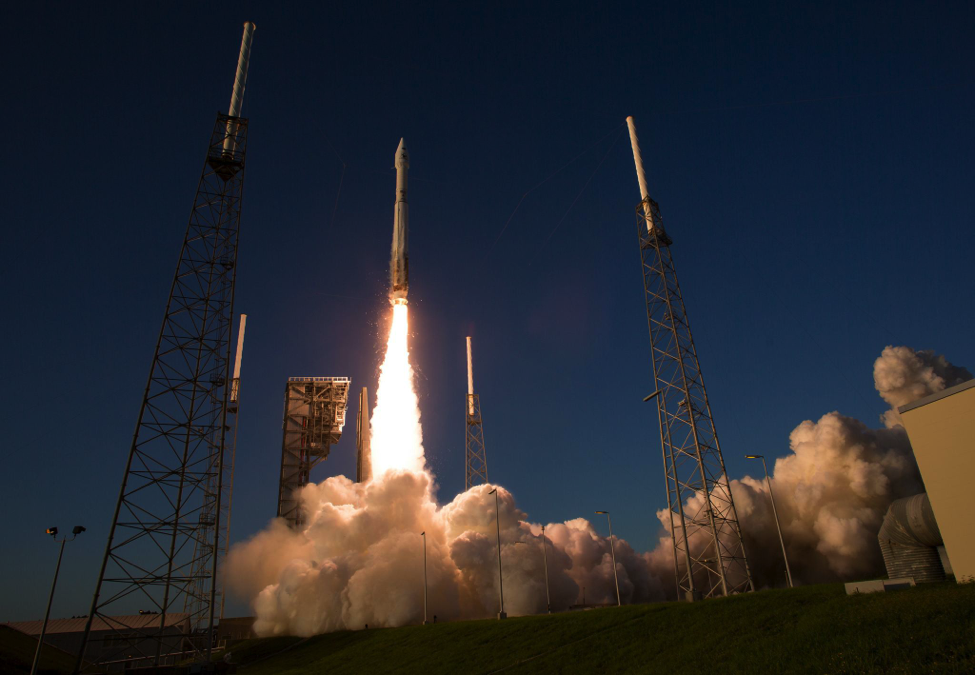-
Tips for becoming a good boxer - November 6, 2020
-
7 expert tips for making your hens night a memorable one - November 6, 2020
-
5 reasons to host your Christmas party on a cruise boat - November 6, 2020
-
What to do when you’re charged with a crime - November 6, 2020
-
Should you get one or multiple dogs? Here’s all you need to know - November 3, 2020
-
A Guide: How to Build Your Very Own Magic Mirror - February 14, 2019
-
Our Top Inspirational Baseball Stars - November 24, 2018
-
Five Tech Tools That Will Help You Turn Your Blog into a Business - November 24, 2018
-
How to Indulge on Vacation without Expanding Your Waist - November 9, 2018
-
5 Strategies for Businesses to Appeal to Today’s Increasingly Mobile-Crazed Customers - November 9, 2018
NASA’s OSIRIS-REx is off to nick some rocks from asteroid Bennu
A US space probe was cleared for launch on Thursday to collect and return samples from an asteroid in hopes of learning more about the origins of life on Earth and perhaps elsewhere in the solar system, NASA said on Tuesday.
Advertisement
The Osiris-Rex explorer rocketed away from Cape Canaveral, Florida, on Thursday evening, just before sunset.
“Today, we celebrate a huge milestone for this remarkable mission, and for this mission team”, said NASA Administrator Charles Bolden.
The $800 million mission’s main goal is to collect a small sample of rocks and surface soil from Bennu, thought to harbour primordial material left over from the formation of the solar system 4.5 billion years ago. Not only will the robotic probe named Osiris-Rex fly to this ancient asteroid, it will scout it out for two years before scooping up some gravel and dust, and deliver the samples back to Earth. After the sample retrieval, OSIRIS-REx will jettison a 100-pound capsule – identical to one NASA’s Stardust mission used to bring back comet dust – that will plunge into Earth’s atmosphere at 27,000 miles per hour.
Bennu was chosen from the some 500,000 asteroids in the solar system because it orbits close to Earth’s path around the sun, it is the right size for scientific study, and is one of the oldest asteroids known to NASA.
Scientists have previously studied pieces of asteroids for decades in the form of meteorites, but all of them were quickly contaminated when they fell to Earth, Lauretta said, noting that the sample returned from a primitive asteroid would enable precise analyses that can’t be duplicated on the ground. “It’s a seven-year mission to boldly go to asteroid Bennu and back”.
Nasa said that the spacecraft has already deployed its solar arrays, which are powering it.
Rich Kuhns, OSIRIS-REx program manager with Lockheed Martin Space Systems in Denver, described the movement as a “gentle high-five”.
Osiris-Rex is expected to reach Bennu in August 2018 and begin a two-year study of its physical features and chemical composition.
“We are going to map this brand-new world that we have never seen before”, said Dante Lauretta, OSIRIS-REx principal investigator and professor at the University of Arizona, Tucson.
“This is another milestone in the University of Arizona’s long string of successes in helping NASA explore the solar system”, said LPL Director Tim Swindle.
Advertisement
Osiris-Rex is the latest in a series of missions to asteroids that began with the 1991 flyby of asteroid Gaspra by NASA’s Jupiter-bound Galileo spacecraft. NASA’s Marshall Space Flight Center in Huntsville, Alabama, manages the agency’s New Frontiers Program for its Science Mission Directorate in Washington.




























